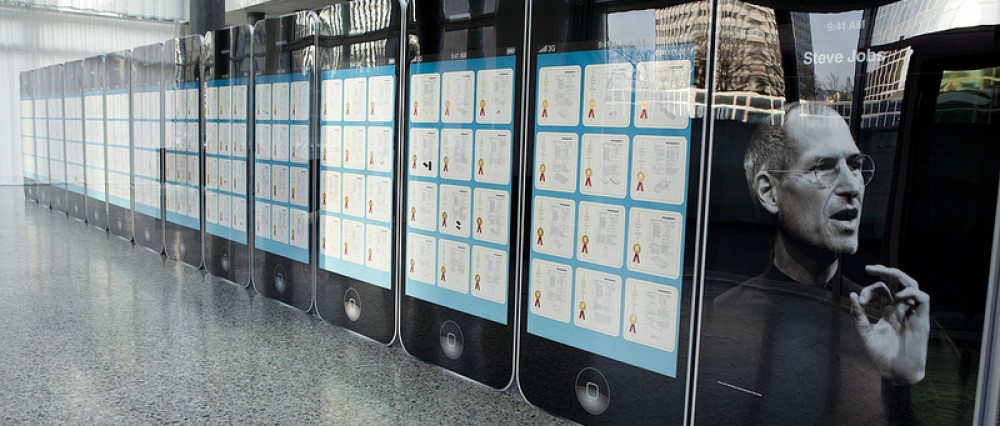Alexander, C., et al. (April 12, 2008.) Beyond Launch: Museum Videos on YouTube. Museum and the Web 2008: The International Conference for Culture and Heritage On-Line.
Allen G., Dana, S.E. and J. Ludden, J. Paul Getty Trust; and E. Johnson, Monticello, USA. Social Media and Organizational Change, National Museum of American History, Smithsonian Institution; (2011). Retrieved March 14, 2013 from http://www.museumsandtheweb.com/mw2011/papers/social_media_and_organizational_change
Bailey, H. (2009). Networking with Visitors. Legacy Magazine. 20 (6). 24.
Bird, D. (2012). Explore More: Extending the Visitor Experience. Dimensions, 2542-44.
British Museum Scoops £100,000 Art Fund Prize and Is Crowned ‘Museum of the Year’ (n.d.). (2011) The Art Fund Prize for Museums and Galleries. Retrieved fromhttp://www.artfundprize.org.uk/art-fund-prize-winner-announced.php
Canadian Heritage Information Network. (2013). Using Social Media as a Marketing Tool” What are the Risks? Retrieved from: http://www.rcip-chin.gc.ca/sgc-cms/nouvelles-news/anglais-english/?p=5891
Charitonos, K., Blake, C., Scanlon, E., & Jones, A. (2012). Museum Learning via Social and Mobile Technologies: (How) Can Online Interactions Enhance the Visitor Experience?. British Journal Of Educational Technology, 43(5), 802-819.
Fletcher, A., & Lee, M. (2012). Current Social Media Uses and Evaluations in American Museums. Museum Management & Curatorship, 27(5), 505-521.
Flynn, N. (2012). The Social Media Handbook: Rules, Policies, and Best Practices to Successfully Manage Your Organization’s Social Media Presence, Posts, and Potential. San Francisco: Pfeiffer.
Fuchs, J. (2012, February 7). Museum Diary, Examples of How Museums are Using Pinterest [Web log post]. Retrieved March 21, 2013, from http://jennifuchs.tumblr.com/post/17227794320/examples-of-how-museums-are-using-pinterest
Grensing-Pophal, L. (2012). Video in a Web 2.0 World Building a Social Strategy. Eventdv, 2012(4), 20.
HootSuite. (2013). Custom Analytics. Accessed March 30, 2013 from http://hootsuite.com/features/custom-analytics
Infographic: How To Train Your Employees To Handle Your Social Media | Mindflash. (2012.). Retrieved March 14, 2013, fromhttp://www.mindflash.com/blog/2012/03/infographic- how-to-train-your-employees-to-handle-your-social-media/?view=mindflashgraphic
Kelly, L. (2010). How Web 2.0 is Changing the Nature of Museum Work. Curator, 53(4), 405-410.
Kidd, J. (2011). Enacting Engagement Online: Framing Social Media Use for the Museum. Information Technology & People, 24(1), 64-77.
Klaver, M. (2011). A Lesson in Learning. Informatie Professional, (10), 10-11. Retrieved from http://search.proquest.com/docview/914763234?accountid=14553
Lauren, L. (2013). Negatives of Social Media Marketing. Chrom.com. Retrieved from: http://smallbusiness.chron.com/negatives-social-media-marketing-22347.html
Nicholls, S.(n.d.). Social Media in Business Internal Communication Strategies – Let’s Talk About it!” Accessed March 30, 2013 from from http://socialmediainbusiness.com/social-media-in-business-internal-communication-strategies-lets-talk-about-it
Osterman, M., Thirunarayanan, M. M., Ferris, E. C., Pabon, L. C., Paul, N., & Berger, R. (2012). Museums and Twitter: An Exploratory Qualitative Study of How Museums Use Twitter for Audience Development and Engagement. Journal Of Educational Multimedia And Hypermedia, 21(3), 241-255.
Pett, D. (2012). Use of Social Media Within the British Museum and Museum Sector. Academia.edu. Retrieved from:http://www.academia.edu/2259635/Use_of_Social_Media_within_the_British_Museum_and_Museum_Sector
Preston, J. (2011, March 16). Speaking Digitally About Exhibits. The New York Times. Retrieved from http://www.nytimes.com.
Proctor, N. (2010). Digital: Museum as Platform, Curator as Champion, in the Age of Social Media. Curator, 53(1), 35-43.
Russo, A., Watkins, J., Kelly, L., & Chan, S. (2008). Participatory Communication with Social Media. Curator, 51(1), 21-31.
Russo, A. (2011). Transformations in Cultural Communication: Social Media, Cultural Exchange, and Creative Connections. Curator, 54(3), 327-346. doi:10.1111/j.2151-6952.2011.00095.x
Simons, N. (2007). Hierarchy of Social Participation. Museum 2.0. Retrieved on March 23, 2013 from http://museumtwo.blogspot.com/2007/03/hierarchy-of-social-participation.html.
Smithsonian Institution (2011). Smithsonian Directive 814, Social Media Policy. Retrieved March 14, 2013 from http://www.si.edu/content/pdf/about/sd/SD-814.pdf
Villaespesa, E. (2013). Diving into the Museum’s Social Media Stream: Analysis of the Visitor Experience in 140 Characters. MW2013: Museums and the Web Annual Conference. Retrieved from: http://mw2013.museumsandtheweb.com/paper/diving-into-the-museums-social-media-stream/
Watkins, J., Russo, A. (July 22, 2007). Cultural Institutions, Co-creativity and Communities of Interest. 2nd International Conference on Online Communities and Social Computing, OCSC 2007. Beijing, China.
Weil, S. (1999). “From Being about Something to Being for Somebody: The Ongoing Transformation of the American Museum.” Daedalus 128.3: 229. Academic OneFile. Web. 24 Mar. 2013.
Wollan, R., Smith, N., & Zhou, C. (2010). The Social Media Management Handbook: Everything You Need To Know To Get Social Media Working In Your Business. Hoboken, NJ: John Wiley & Sons.
Wong, A. S. (2011). Ethical issues of social media in museums: A case study. Museum Management and Curatorship, 26(2), 97-112.
